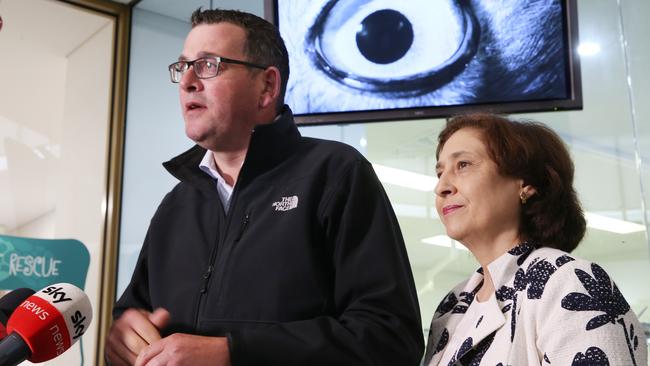Gas failure clouds Victoria’s renewables push


For the moment let’s put aside ballooning debt plus the belt and road links between Victoria and China. Victoria is planning a different energy strategy to the commonwealth and most other states which it hopes will deliver employment and investment, plus reverse the COVID-19-sparked population exodus.
Victoria is intent on leading the nation in developing renewable energy and in particular is anxious to stay well ahead of NSW in the race for renewables leadership. If NSW tries to match it, the commonwealth energy targets will be irrelevant.
That race for renewables leadership generates part of the huge debt that Victoria is building up. And the quest so dominates Victorian strategies that it is prepared to allow significant parts of its community to suffer as the price for leadership on renewables.
This week I listened to the Victorian Minister for Energy, Environment and Climate Change, Lily D’Ambrosio, explain to journalists at the Melbourne Press Club how the Victorian strategy will work.
And it was fascinating that many of the journalists took the Victorian emissions reduction targets, which are ahead of the Commonwealth and other states, as merely a base and suggested the state is not going far enough. There was no interest in the casualties.
Targets are thrown around like confetti but Victoria looks to halve emissions by 2030 or earlier and it’s already well on the way to a 25 per cent cut by 2025.
To the credit of D’Ambrosio, the current Victorian plan is far more sophisticated than its early attempts at plonking wind farms and solar stations around the state without any understanding of the need to reconfigure the power grid and have backup for times when the wind does not blow and the sun is not shining. Victoria missed extensive summer blackouts by good luck.
The current plan revolves around rectifying those two weaknesses and adopting different strategies to Canberra.
And so D’Ambrosio explained that Australia’s “entire national grid is just not fit for purpose ……and cannot accommodate what needs to occur in the time frame that they need” .
So Victoria will divide the state into grid regions and spend vast sums on its grid to “provide the confidence that investors need to continue to invest in our state”.
But the success of the Victorian plan depends on the implementation of the agreement with Canberra to jointly progress the Victoria to NSW Interconnector (VNI) West project known as KerangLink, so that it can be delivered by 2027. Victoria is fearful the commonwealth will not deliver.
Meanwhile Victoria is also making massive battery investment.
The casualties? Victoria has the most extensive gas distribution network in the country which stems from the early availability of low-priced gas which former premier Henry Bolte initially refused to sell to NSW.
A great many Victorians rely on gas for cooking and heating and many industrial plants depend on reasonably-priced gas. This week there will be power price reductions in Victoria but the price of gas is again rising.
The reason for that is simple. Victoria has refused to develop its massive Gippsland onshore low-cost world class gas reservoir, which does not require fracking. If that gas was developed then the great Victorian image as the home of non-carbon energy would be broken.
So when I asked the minister about the non-development over the last decade I received a lecture.
D’Ambrosio: “This notion that somehow we’ve locked up onshore gas without fracking is absolutely wrong. We made a policy decision last year, I think it was earlier this year, and there’s also some investment dollars to assist with onshore exploration.
“What I will say is that there is no shortage of gas. The problem that we’ve got is that nationally we’ve got a system that is locked in a situation where too much of our domestic gas produced domestically has been allowed to be exported. That’s what’s caused the price increases of gas--- nothing more nothing less.”
The remote structure of the press conference prevented the pointing out of the absurdity of those remarks from an energy minister sitting in a world-class low-cost gas deposit.
Sadly the failure to develop the gas means it’s the traditional Labor supporters are being hit.
But the opposition is weak on this subject and the media is caught up in the renewables excitement. Meanwhile what should be a prosperous region, the Latrobe Valley, is set for even more poverty as the brown coal power stations are shut.
And it’s totally bizarre that there are series of projects being developed to import gas at high prices to increase the pain for gas domestic and industrial consumers.
To be fair, about $30m to $40m is required to be spent to confirm Exxon’s assessment of the vast reserves and the minister gave the slightest hint that the government might allow the gas to be developed. But I don’t think it’s likely, given the renewables strategy.


Canberra and five other states, plus many Victorians, scratch their heads trying to work out what the southern state is all about and why it has become so different to the rest of the nation.